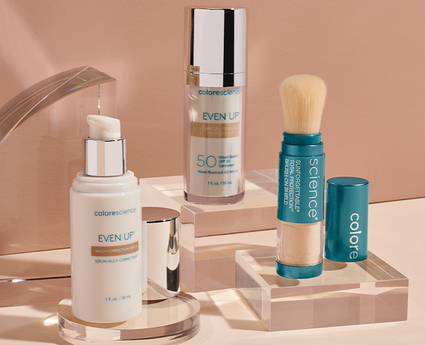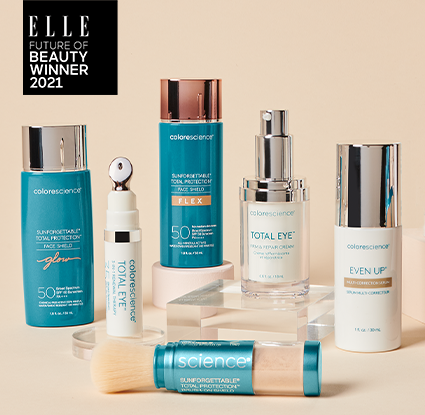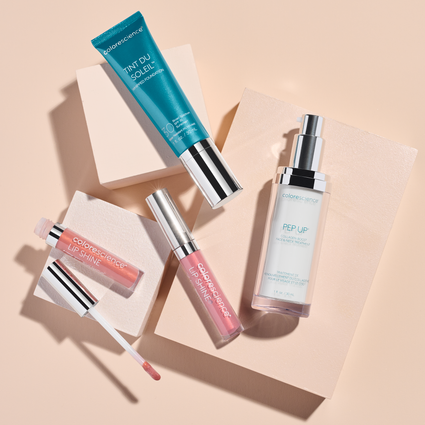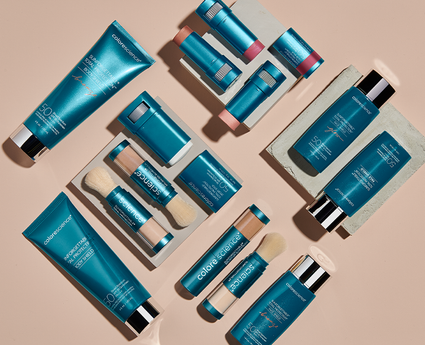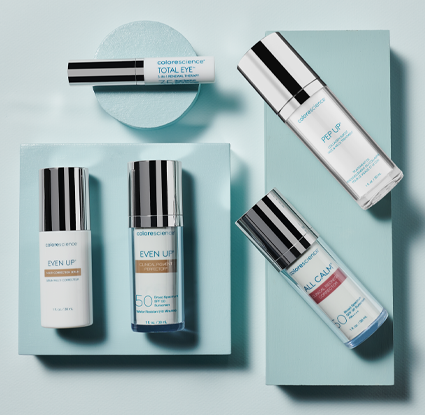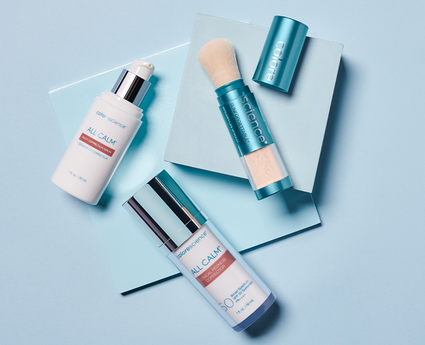Top 10 Summer Skin Care Tips
The sun is shining, that ‘school’s out’ feeling is in the air, and many of us will be at the beach. Summer means spending plenty of days outdoors, but long hours in the sun can wreak havoc on your skin. Whether you’re taking a trip to a tropical location or just going about town, it’s always a good time for sun protection.
Keep these important skin care tips in mind this summer to protect your skin from the sun’s harmful UV rays. With these summer beauty tips in mind, you’ll be ready to face the summer sun head on while protecting and nourishing your skin.
The best summer beauty secrets help you look your best while protecting your skin for a radiant glow that lasts all year. Keep these 10 summer skin tips in mind this summer and you’ll greet each new season with glowing skin.
Top 10 Summer Skin Care Tips
1. Wear Sunscreen Every Day
The first of our summer beauty tips for your skin is by far the most important—wear sunscreen every single day.
The sun’s rays are strongest between the hours of 10a.m. and 4p.m. all year round. Even cloudy days can’t block UVA and UVB rays during the day, so it’s critical that you apply some form of sun protection rain or shine every few hours.
The risks of forgoing sunscreen are vast, and the statistics can be alarming. According to Skincancer.org, 1 in 5 Americans will develop skin cancer during their lifetime. Skin cancer is the most common type of cancer in the United States, and it can be deadly. In 2014, 76,665 people in the U.S. were diagnosed with melanomas of the skin, and 9,324 people died from melanomas of the skin.

The good news? Skin cancer is almost entirely preventable. That means you too can avoid being the 1 in 5 Americans who develop skin cancer. The solution is simple—slather on the sunscreen every day, at least 30 minutes before you expect to be in the sun. Just by following this skin care routine, you slash your risk of melanoma in half.
What SPF Should I Use?
Look for sunscreen lotions and sprays with high SPF ratings. Dermatologists recommend using a sunscreen that provides a sun protection factor (SPF) of at least 30.
What exactly is SPF? This acronym stands for Sun Protection Factor, which measures a sunscreen’s ability to protect your skin from UVB radiation. Here’s an easy way to understand it: If your unprotected skin starts burning after 10 minutes outdoors, using an SPF 15 sunscreen would theoretically prevent reddening for 15 times longer—or 2.5 hours.
To understand the type of protection you’re getting out of your sunscreen, use this handy guide:

- SPF 15: Blocks 94% of UVB rays
- SPF 30: Blocks 97% of UVB rays
- SPF 45: Blocks 98% of UVB rays
Unfortunately, there’s no sunscreen that can completely block all UV rays. Anything over SPF 50 offers the same amount of protection, so don’t worry about finding a sunscreen bottle with an SPF rating of 100. Usually, those bottles are just misleading, and don’t offer better sun protection.
How Much Sunscreen Should I Use?
Once you’ve got your sunscreen picked out, apply it liberally. The Skin Cancer Foundation offers an easy rule of thumb to live by: use at least an ounce of sunscreen every two hours. Need a quick measuring cup to take on the go? Grab a shot glass and fill it with sunscreen—that’s the amount you should be using on average.
Is Sunscreen Really Waterproof?
Don’t make the mistake of interpreting water-resistant sunscreens as waterproof. There’s no sunscreen that’s waterproof or sweat proof—manufacturers aren’t even allowed to claim that they are. If a product is advertised as water resistant, it must include whether it lasts for 40 or 80 minutes when introduced to water. It’s best to reapply more often if you’re going to be in the water for any period of time.
Can Sunscreen Expire?
Don’t forget to refresh your stock of sunscreen; those expiration dates matter, and once you’ve opened a bottle of sunscreen, you have to use it or it will become ineffective. Once your sunscreen is clumping, it’s no longer useful, so toss those old bottles right now.
Keep in mind that sunscreen should be a year-round accessory. Even when the summer ends and the clouds roll in, it’s important to wear sunscreen each and every day of the year. Your skin can burn just as easily in overcast weather, so be diligent with your sunscreen application whether it’s August or the dead of winter.
2. Commit to Reapplying
In general, dermatologists recommend that you reapply your sunscreen every two hours. However, if you’re doing anything active or you’re exposed to water, you may need to reapply more frequently.
While water easily washes off sunscreen, so if you’re splashing around in the waves or lounging in the pool, commit to reapplying your sunscreen more often. Perspiration has a similar effect; if you’re out hiking the trails or working in the backyard and sweating buckets, your sunscreen can easily slide off. Be sure to apply another two ounces to keep your skin protected from the blazing summer sun.
3. Be Careful About Exfoliation
One of the best summer beauty tips for skin? Exfoliate, but don’t overdo it. It’s important to get those dry skin cells off --especially if you want to remove a fake tan-- but exfoliating too much in your daily summer skin care routine can leave your skin more sensitive to sunlight.
Just a little bit of gentle exfoliation will help you slough off that old skin for smooth makeup application, so there’s no reason to apply a rough scrub to your face during the summer months. Harsh chemical peels and gritty scrubs should be saved for the cooler months when your skin isn’t in direct sunlight.
However, if you’re planning on being outdoors quite a bit this summer, or to lie in the sun for any type of prolonged period, maybe hold off on the exfoliation altogether.
4. Moisturize
You’re hopefully diligent about applying moisturizer to your skin during the drying winter months, but make sure you keep up the good work during the hotter seasons as well.
Unfortunately, some of us let our moisturizing fall by the wayside in our summer skincare routines. When temperatures rise, many people begin to neglect their moisturizer, and it’s understandable. The wrong types of sunscreen can make skin feel greasy, which leads many to mistakenly believe they don’t need to moisturize. Others feel that moisturizer will only make them feel stickier during the sweatiest days of the year and clog up pores.
Leave these fears at the door, because lightweight, non-comedogenic sunscreens are designed to provide protection without clogging up your pores. No summer breakouts for you!
If you notice your skin is dry in the summer months, your A.C. may be to blame.
Our air conditioners get a workout when the temperature rises. Unfortunately, cooling down your house isn’t doing your skin any favors. Artificially dehumidified air can further dry out your skin. When the dry air leeches moisture from your skin, your aging lines and wrinkles will become more pronounced, so it’s important to keep up with your moisturizing routine.
Instead of thick, creamy moisturizers, look for lightweight sunscreen solutions that provide the moisture you need without making your face feel gunky.
5. Protect Commonly Missed Areas
When it comes to summer beauty tips for skin, you might think you’ve got the sunscreen portion down. Turns out, a lot of us aren’t as thorough as we think. While you’re likely in the habit of rubbing sunscreen on your face, arms, and legs, do you pay attention to the skin on the rest of your body?
These are the five places you’re probably forgetting to put sunscreen:

- Your Lips
Ever left a day at the beach with cracked, peeling lips? Your lips are just as susceptible to sunburn, but they don’t always get the protection they need. You can rub sunscreen on your lips, or utilize a lip balm with SPF in it.
- The Tops of Your Feet
Do you apply sunscreen to your legs but stop before you get to your feet? Many people do so without realizing. It’s important to get the fair skin on top of your tootsies slathered in sunscreen before heading out, especially when summer calls for sandals and other open toed shoes. While the soles of your feet are protected by a thick layer of dead skin, the tender skin on the upper portion of your foot needs a little extra protection.
- Your Eyelids
As you apply sunscreen to your face, you likely avoid rubbing it into the skin around your eyes—who wants sunscreen getting into their eyes? Unfortunately, this leaves the sensitive skin on your eyelids vulnerable to the sun’s UV rays. The best way to protect your eyelids from sun damage is through sunglasses.
- Your Ears
Don’t let your ears take the heat. Make sure to douse your ears in sunscreen to protect the sensitive skin there from burning. Who wants flaky ears?
- Your Scalp
You’re likely not rubbing sunscreen into your scalp because you don’t want greasy hair. Unfortunately, this means your head takes a beating with no sun protection since your hair can’t completely cover your head. Be sure to rub sunscreen right up onto your hairline, and wear a hat as often as possible to avoid burning the top of your head.
6. Treat Sun Damage
Even with our best efforts, the sun sometimes gets the best of us—leaving behind a painful red burn. If you’ve gotten a sunburn, don’t just wait for it to go away. Actively work to treat your burn, and your skin will thank you.
While prevention is best, quickly treating your sunburn can stop the amount of damage done to your skin cells. In the event of a sunburn, you should help your skin repair itself as quickly as possible, so keep these tips in mind:
- Get out of the sun: As soon as you notice a burn developing, you need to get out of the sun. This sounds like common sense, but you’d be surprised how often people remain under the sun’s harsh UV rays, even after noticing a tinge of redness.
- Know when to seek help: Hopefully your sunburn isn’t severe, and most sunburns can easily be treated at home. However, if you start feeling nauseous, have a fever, or develop blisters on more than 20 percent of your body, a trip to Urgent Care is a good idea.
- Use Aloe Vera: This plant is a miracle worker when it comes to soothing a sunburn. Grab some aloe gel from your local pharmacy or invest in an Aloe Vera plant and use the sap from its leaves to calm your skin.
- Take a pain reliever: If your skin feels especially tender, a pain reliever can help calm inflammation, which will reduce swelling and pain.
- Run a cold bath: Few things feel as refreshing as a cold shower after a sunburn. Avoid taking a cold shower, as the torrent of water consistently hitting your burnt skin could cause irritation. Fill your bathtub with cold water and toss some ground oatmeal or baking soda for a homemade sunburn remedy that helps your skin retain its moisture.
- Leave your blisters alone: If your skin starts to bubble up with blisters, do your best to avoid touching them. If you pick or peel off your burned skin, you could permanently scar your skin.
- Use lotion: To help repair your skin, apply plenty of moisturizer and lotion. This will help you avoid peeling and nurse your skin back to health more quickly.
The most important thing you can do after a sunburn is watch your skin for any changes. If you have moles, or develop moles after being in the sun, be sure to watch for signs of melanoma using this handy graphic:

7. Stay Hydrated
Wondering how to take care of your skin in the summer naturally? The solution might be as simple as filling up your water bottle.
When you get a sunburn, your body suffers from the outside in. Sunburns can dry up your skin, and getting the appropriate amount of H2O can help you avoid dehydration. Severe sunburns can cause vasodilation, a process in which the blood vessels in your body dilate, causing your skin to lose water quickly. This can lead to fatigue and dehydration, and in serious cases, heat stroke. Be sure to load up on water after getting a sunburn and add electrolytes to regain your strength.
The scientific community is still studying whether drinking more water improves the appearance of your skin. Because water can’t be patented and sold by pharmaceutical companies, it’s hard for researches to find funding for the study of water’s benefits.
However, water is essential to overall health, and many dermatologists believe proper hydration leads to supple, clear skin. Make sure you’re getting your eight glasses of water a day and be your own judge of H2O’s effect on your skin.
8. Cover Up
If you’re out in the sun, be sure to cover up as much as possible. Pull out that beach umbrella, wear breathable clothing that still blocks UV rays, don headwear that protects your scalp, and don’t forget to shield your eyes from the sun’s bright rays.
- Stick to the Shade
Whether you’re beachside or lounging by the pool, make it a priority to look for shaded areas. Bring a beach umbrella to the shore and make sure to spend the majority of your time under the cover of shade. Give yourself a break from the sun while tanning poolside, and head indoors intermittently to give your skin a reprieve from the sun’s harsh rays.
- UPF Rated Clothing
Some clothing brands are labeled with a UPF rating, which stands for Ultraviolet Protection Factor. This measures the UV protection offered by the garment’s fabric, and this rating system is very similar to the SPF rating system used on sunscreen bottles. While UPF rated clothes aren’t yet commonplace, sticking to tightly woven, thicker fabrics that aren’t sheer can provide you with more protection when you’re running around town.
- A Wide-Brimmed Hat
Make sure to don a wide-brimmed straw hat to provide your scalp, face, and shoulders with as much shade as possible, whether you’re laying out on the beach or walking around town.
- Sunglasses
Channel your inner Hollywood diva and throw on a pair of stylish sunglasses. You’re probably not rubbing sunscreen around your eyes, but this delicate layer of skin can be easily damaged by sun exposure. Sunglasses make you look great, protect those peepers, and safeguard the thin skin of your eyelids.
9. Practice Safe Shaving Habits
When the sun comes out, it’s time to don that bikini or stylish one-piece, which comes along with the sometimes-dreaded task of a regular shaving routine. If you don’t take the right precautions, shaving can cause rash, razor burn, and painful tiny cuts that wreak havoc on your skin—sometimes in very sensitive areas.
Looking out for your skin this summer means practicing safe shaving habits, and these summer beauty tips and tricks will keep your skin smooth and soft without painful, red bumps.
- Timing matters: Don’t reach for the razor as soon as you step into the tub. Stand in the shower for at least two to three minutes before shaving. Why? This gives your hair ample time to hydrate, which makes it softer and much easier to shave. Wash your hair and condition first—then turn to your shaving routine.
- Combat razor burn: Do you notice a rash around your bikini line after shaving? That’s razor burn, which starts as a pinkish rash and can transform into a cluster of red, itchy bumps. To avoid razor burn, make sure you buy new razors regularly, and look for those with more blades. If you do get razor burn, just rinse the irritated area with cold water and avoid alcohol-based products.
- No more ingrown hairs: There are few things as frustrating as ingrown hairs, those little bumps that can be both unsightly and painful. An ingrown hair occurs when your hair doesn’t grow in the correct direction, missing the follicle opening and continuing to grow under the surface of your skin. How does this misdirection happen? If your hair grows at a strange angle, or there’s too much dead skin left in the pore, ingrown hairs are likely. So how do you combat this? Use tip number 3—exfoliate. Gentle exfoliation helps remove dead skin cells and can release any already ingrown hairs.
- Shaving cream is your best friend: Don’t every dry-shave; instead, pull the razor across your skin with some type of shaving cream. This cream is formulated to help your razor slide over your skin without clogging it up, and can help you get a closer, smoother shave. Plus, you have the added benefit of spotting the areas you missed.
10. Try Mineral Makeup
Get that glowing summer skin without spending hours in the sun. Combining sun safety and makeup kills two birds with one stone—and will speed up your morning summer skin care and beauty routine. Mineral makeup is worn as either foundation or a setting powder, and will give you a smooth matte coverage that looks natural. Even better news? The right mineral makeup products can actually supplement your sun protection efforts.
Mineral makeup is made up of naturally occurring inorganic materials that reflect the sun’s UV radiation, adding an extra measure of protection when you head outside. Colorescience has developed revolutionary non-chemical sunscreen protection that’s gentle enough for any skin type and easy to reapply.
The best summer skin care tips are those that you can commit to. Consider this list and figure out ways you can incorporate these summer beauty secrets into your daily routine.
It’s summertime, and the living is easy, right? Maybe for you, but not for your skin. Be sure to practice these important summer skin care tips and keep your skin feeling and looking its best all summer long.

